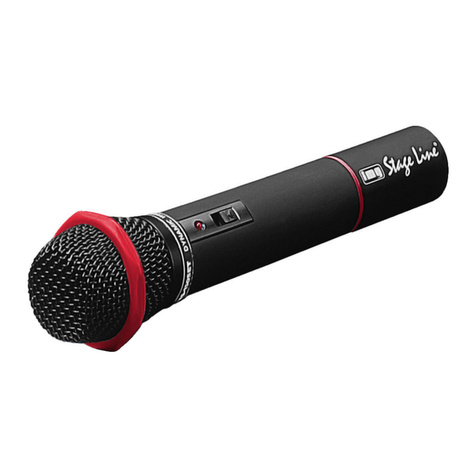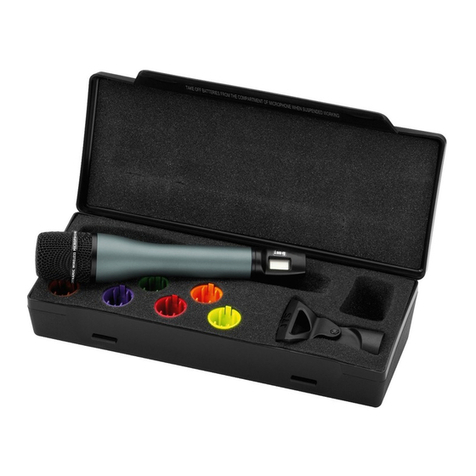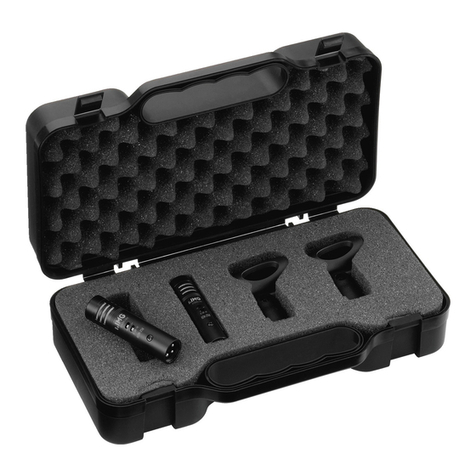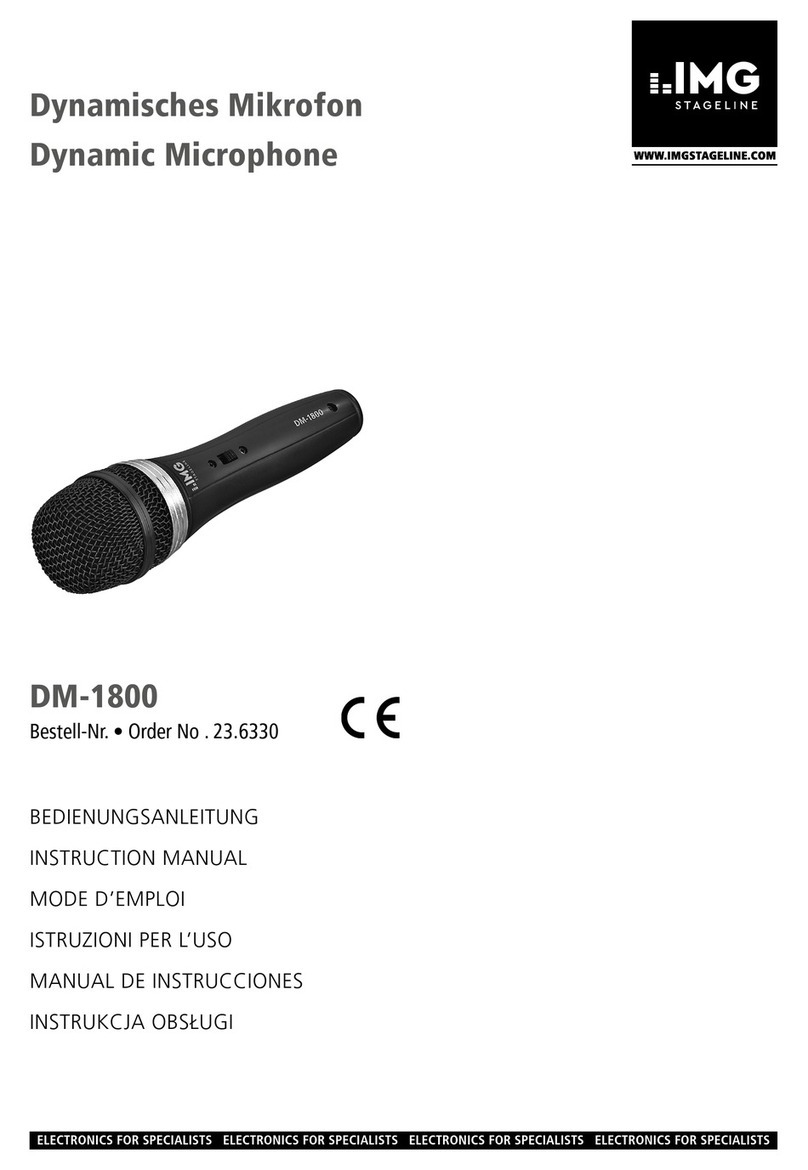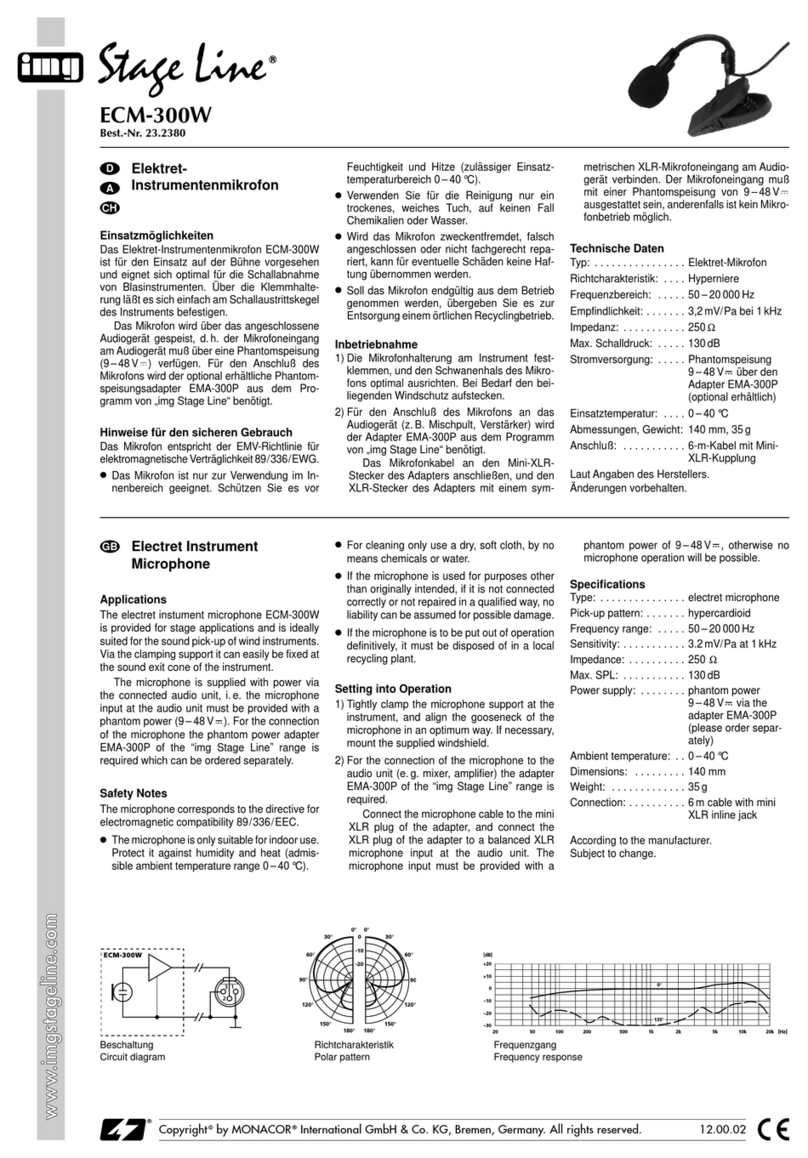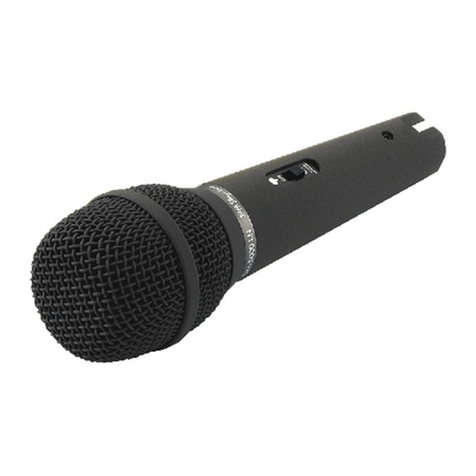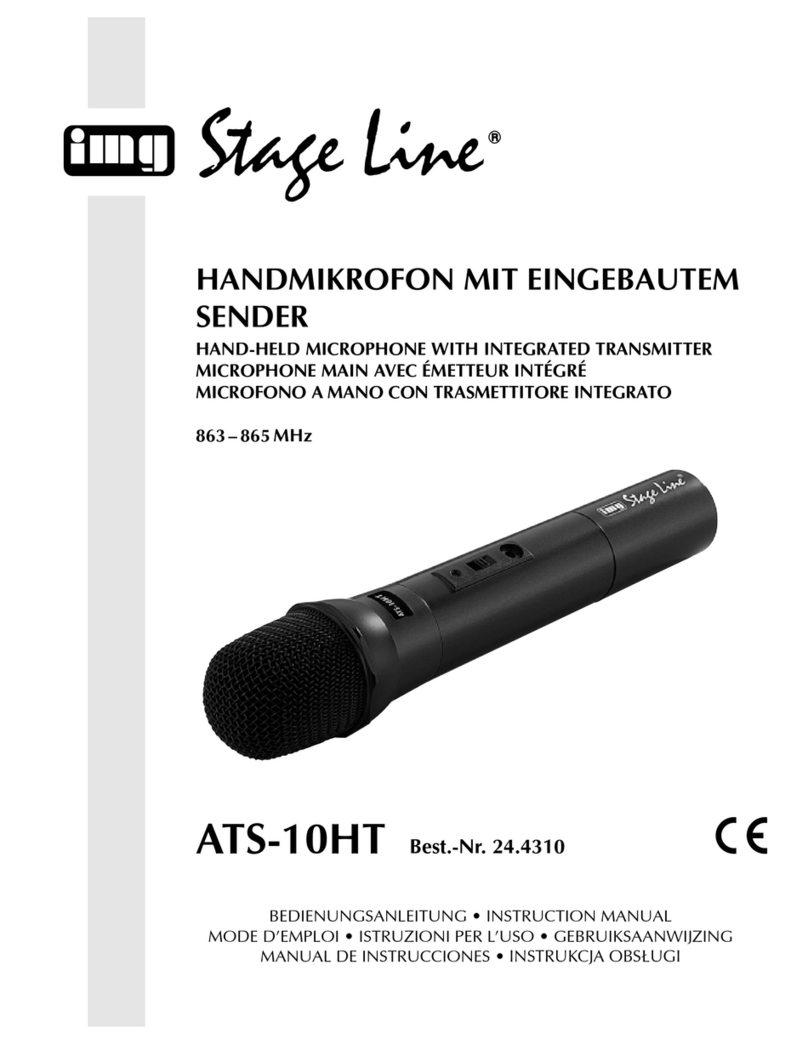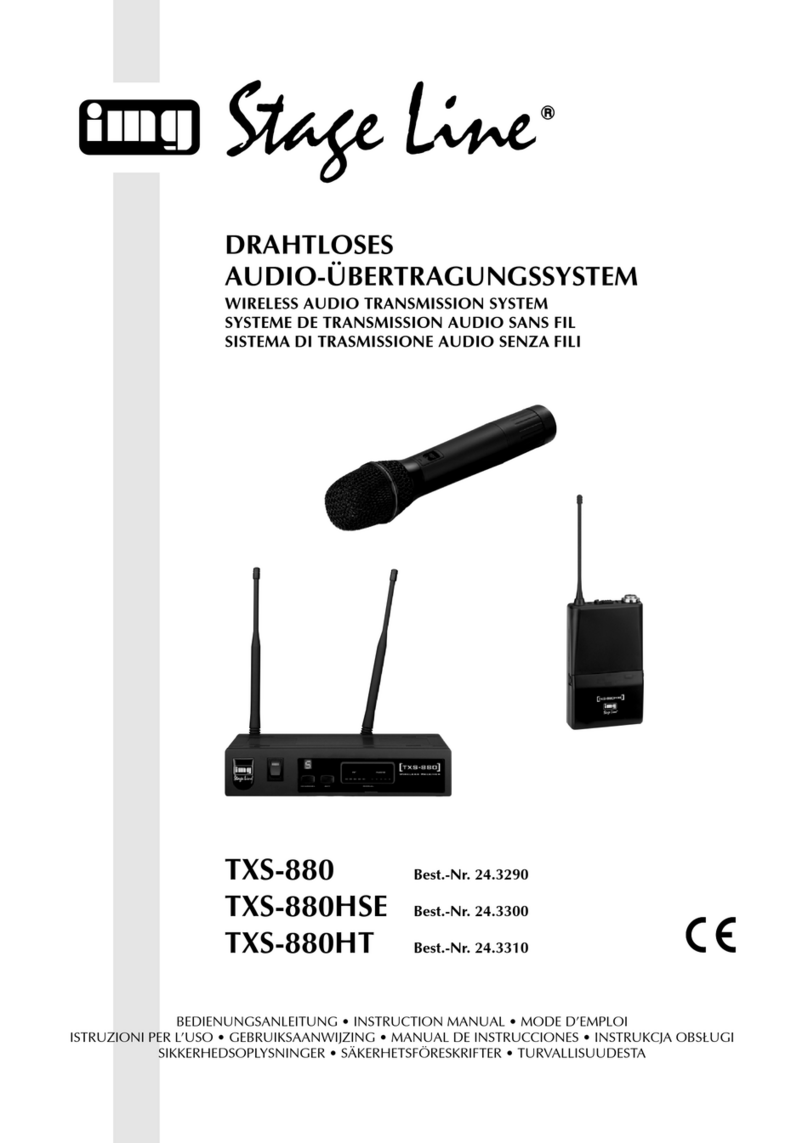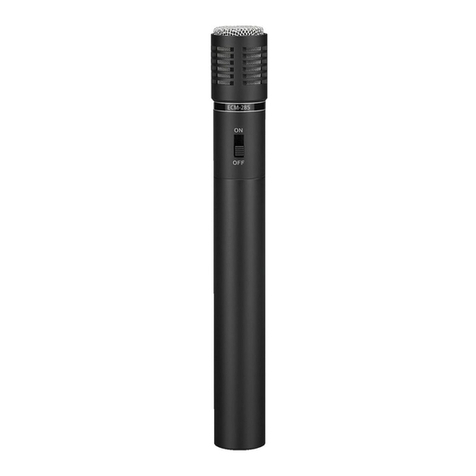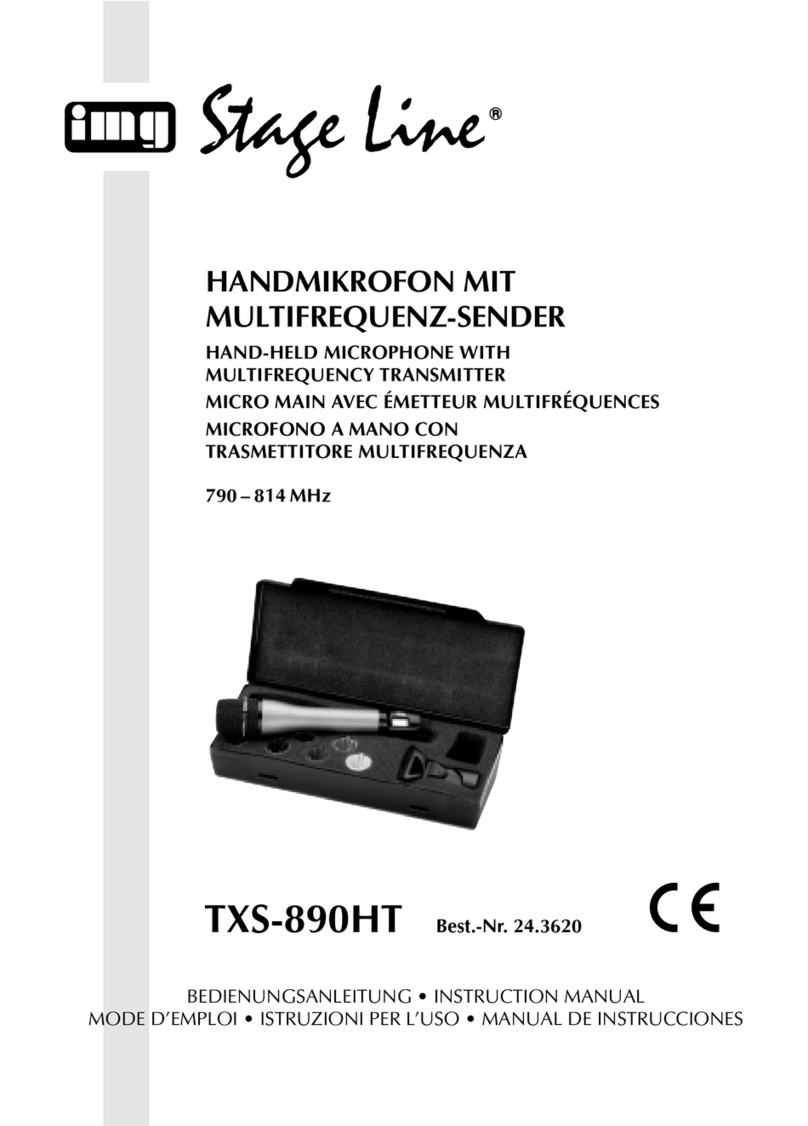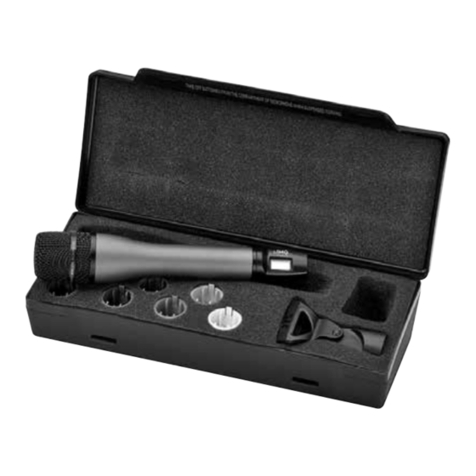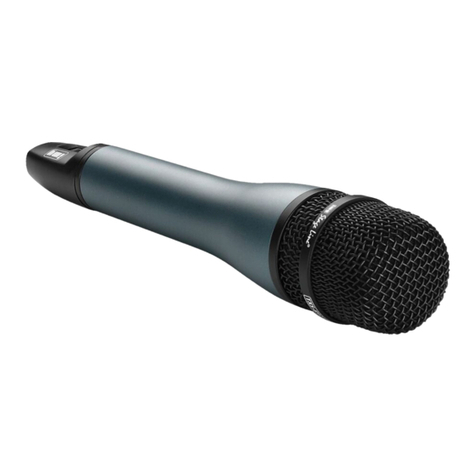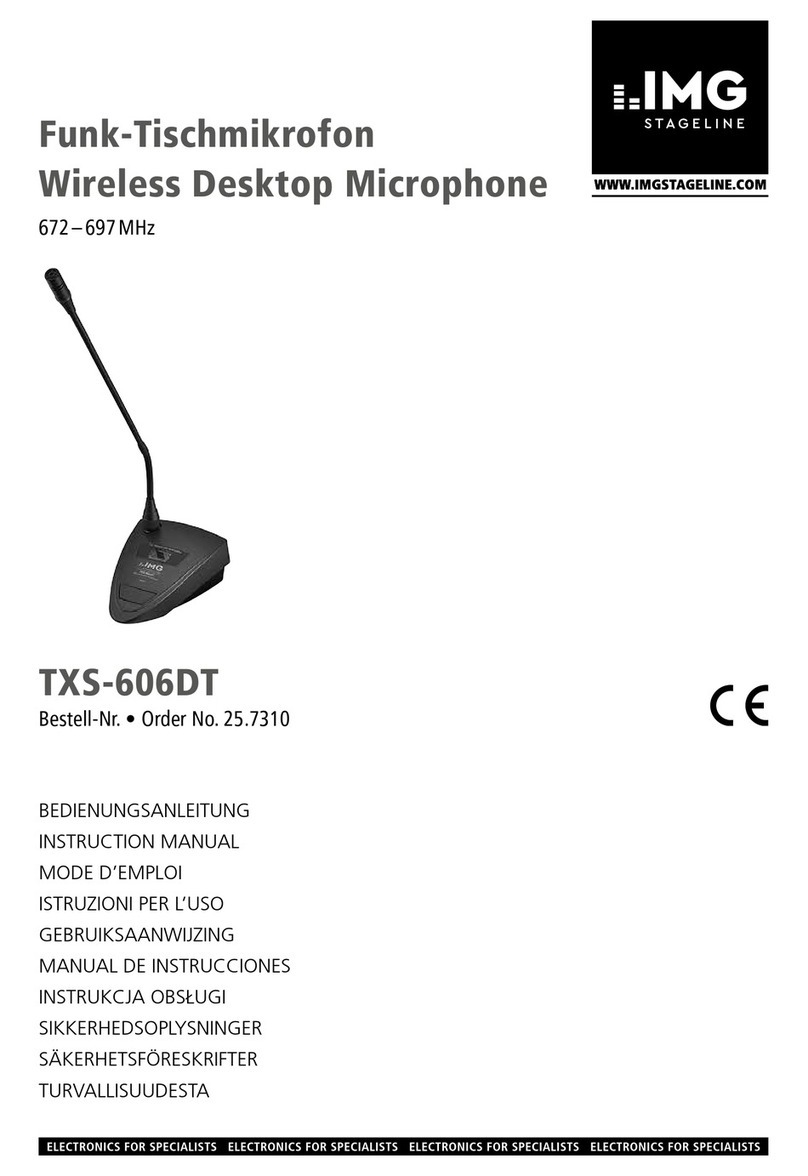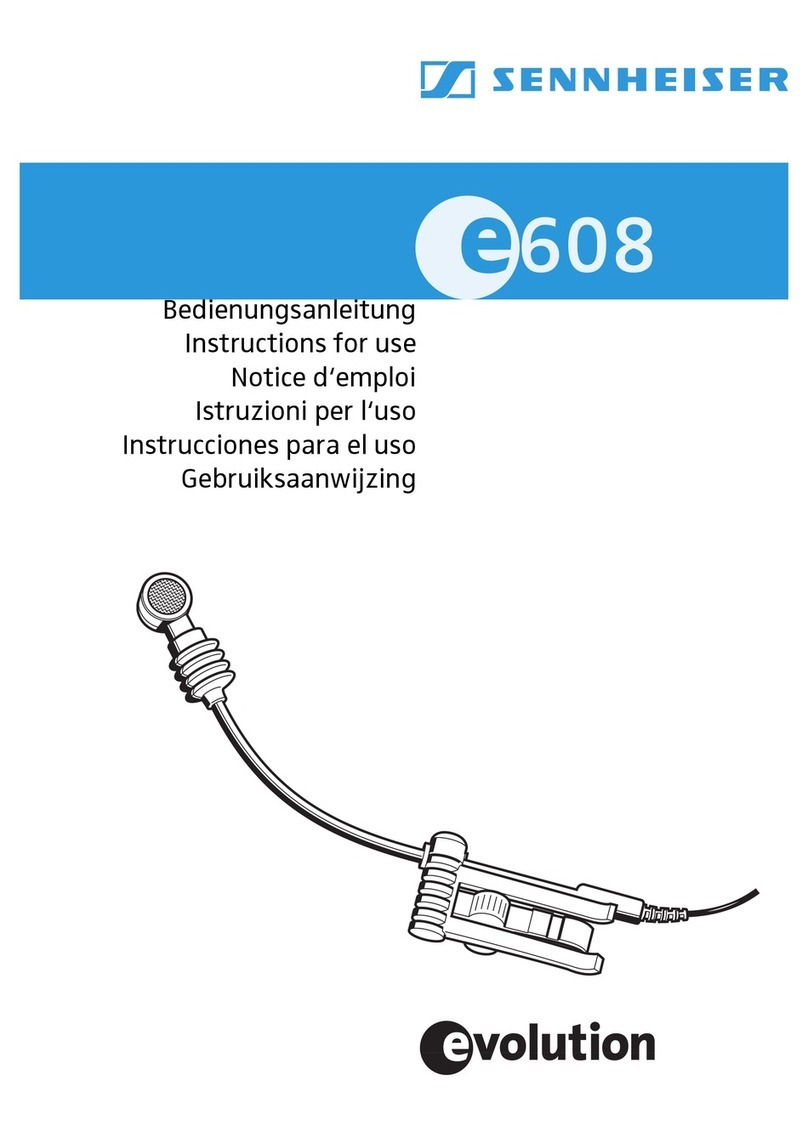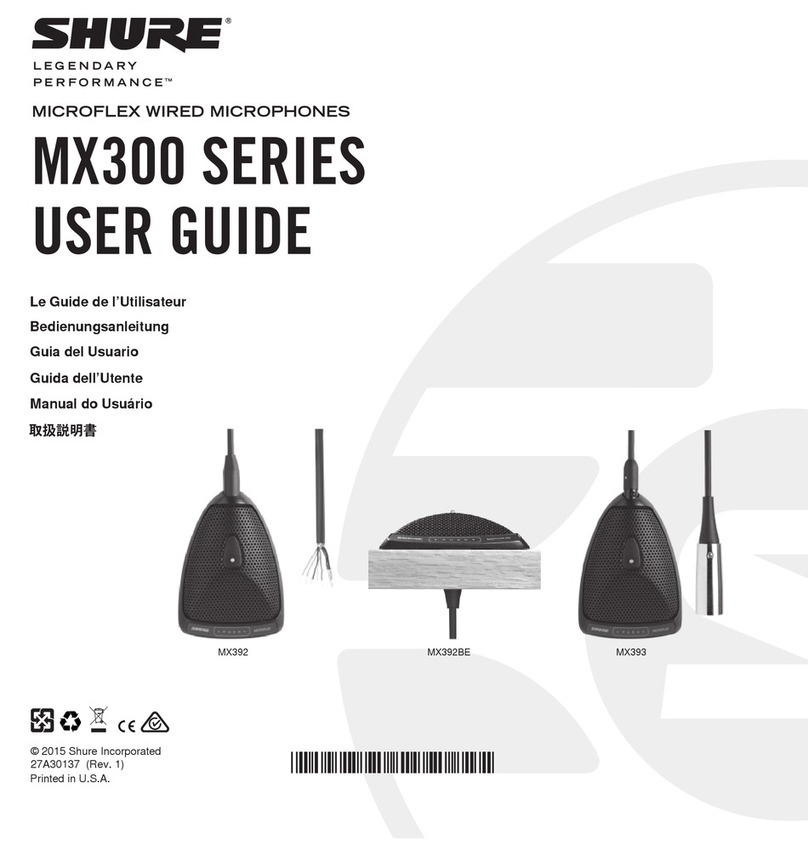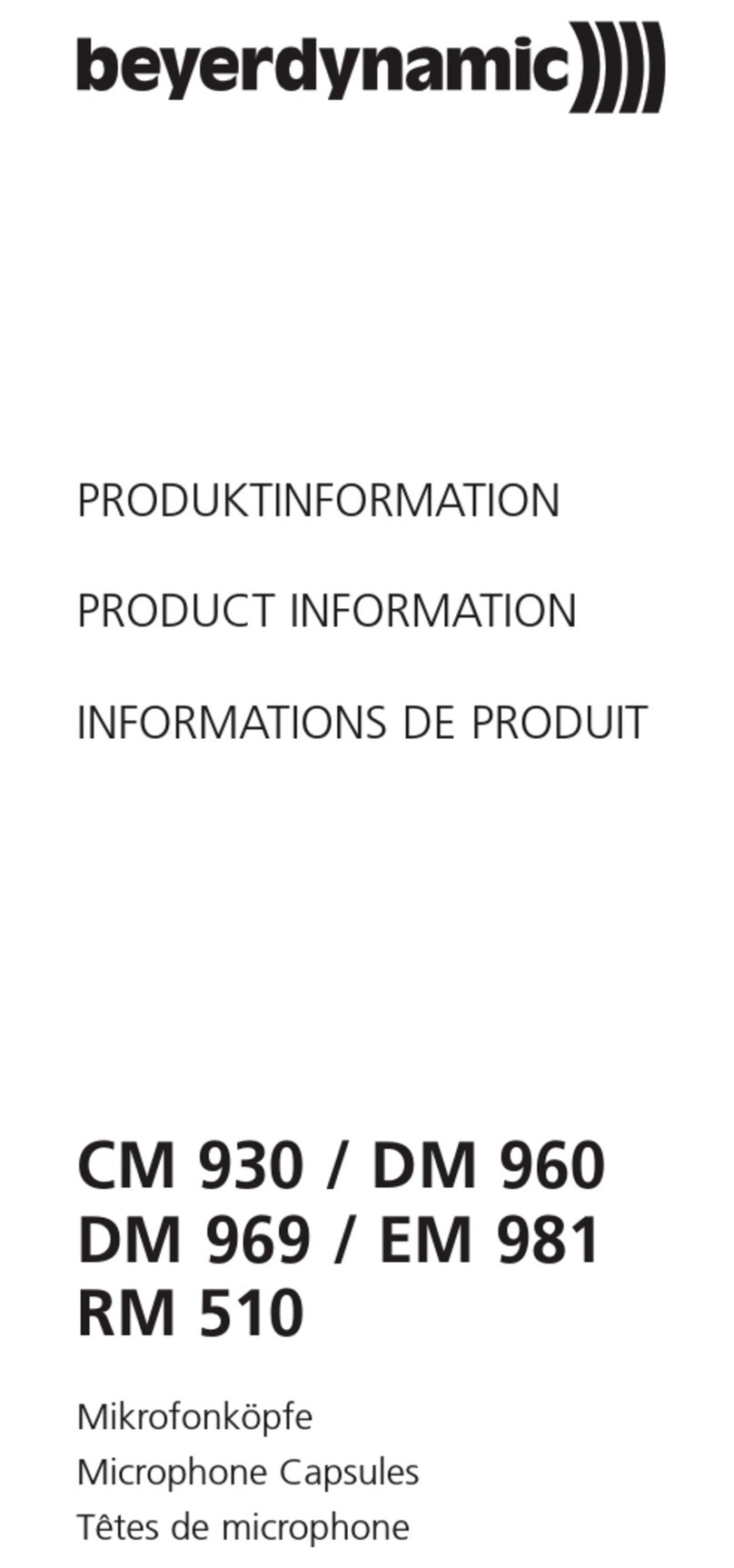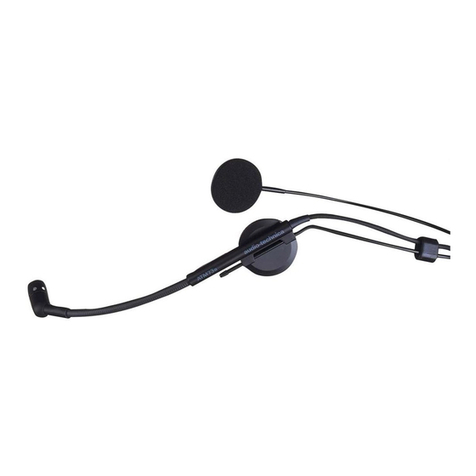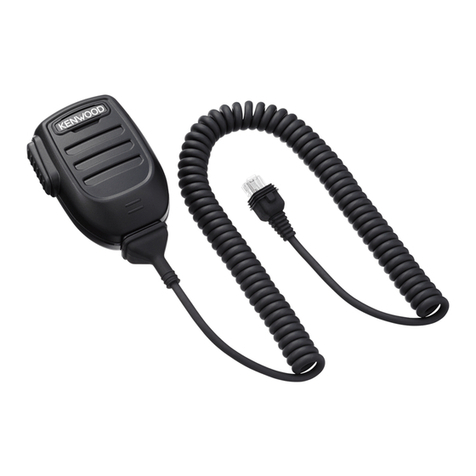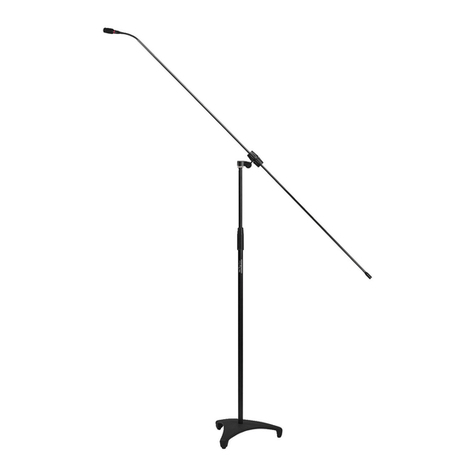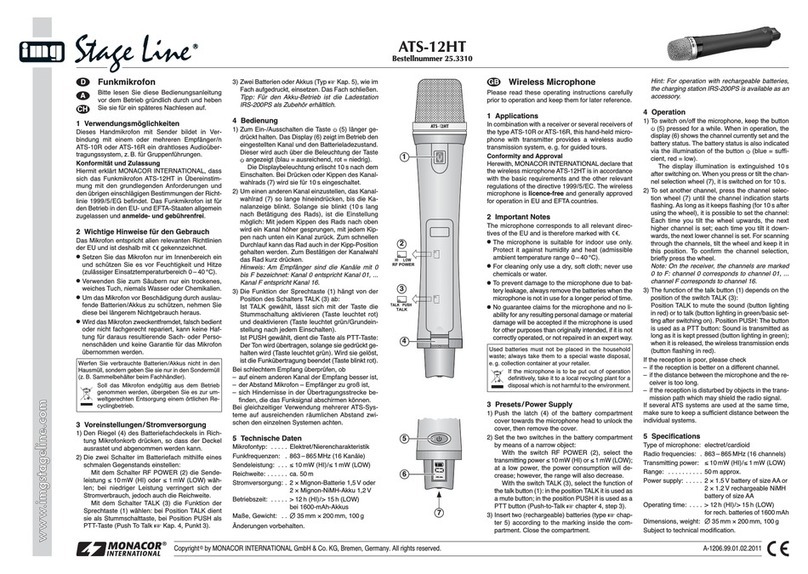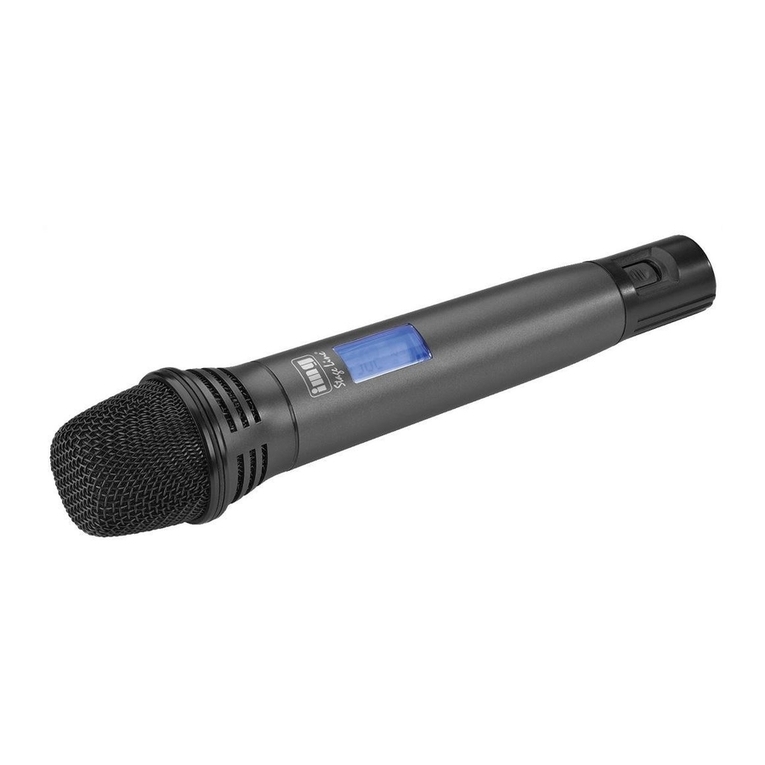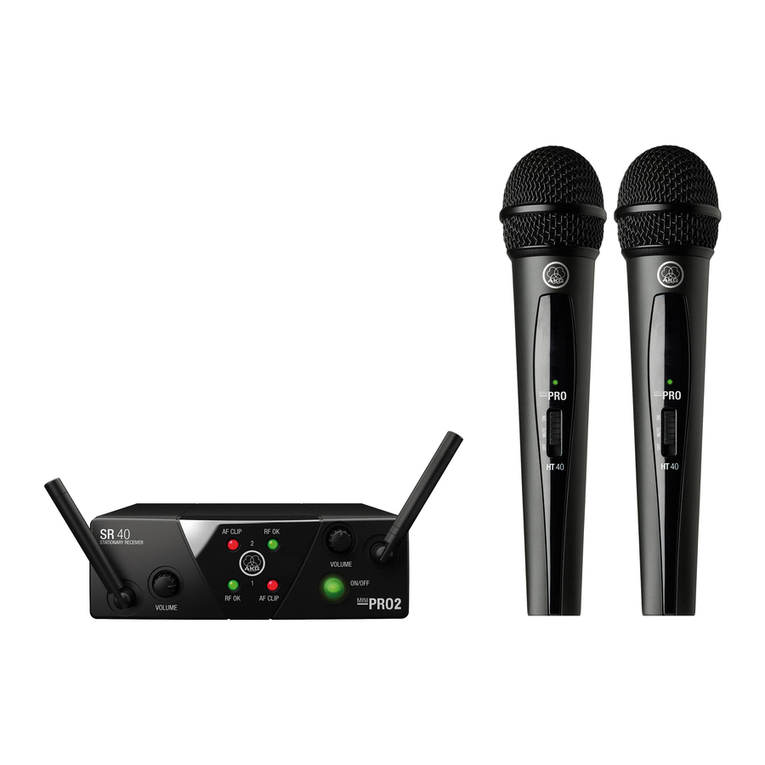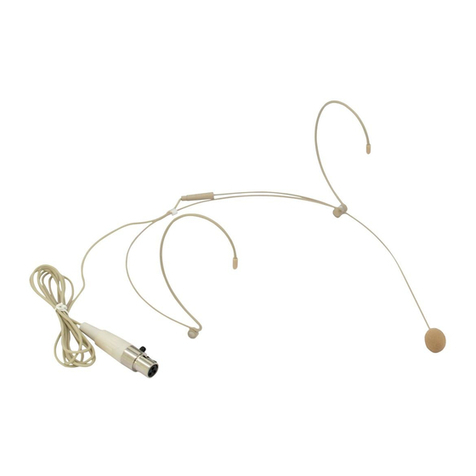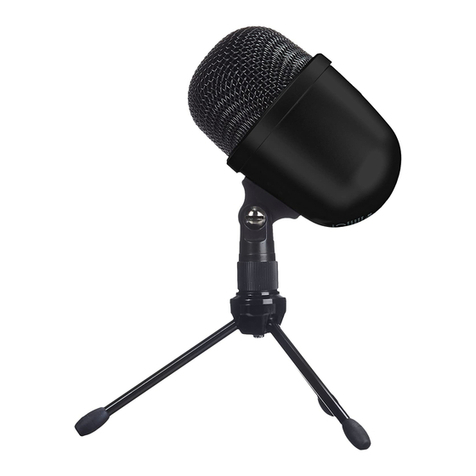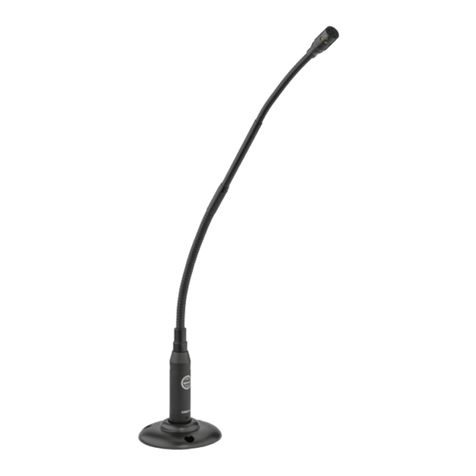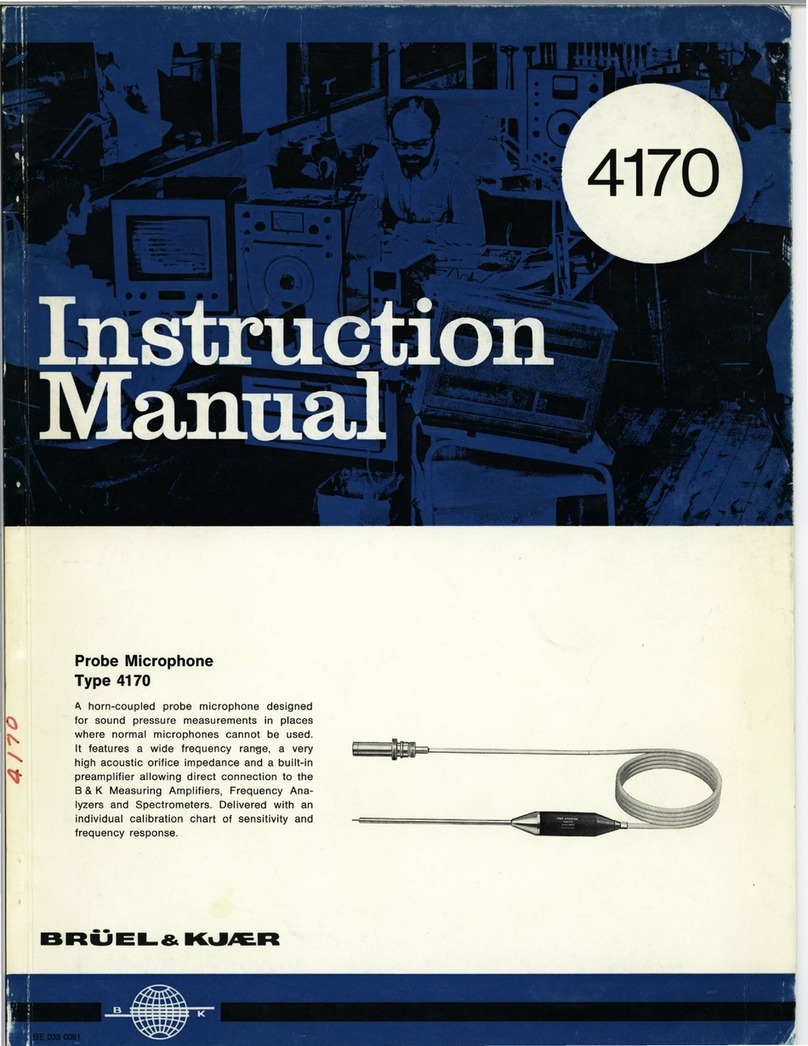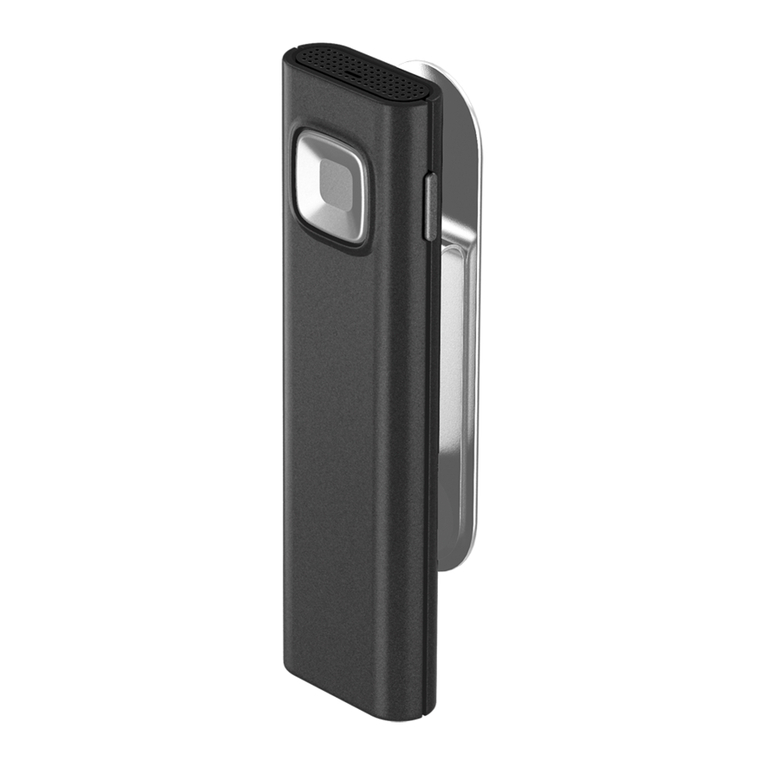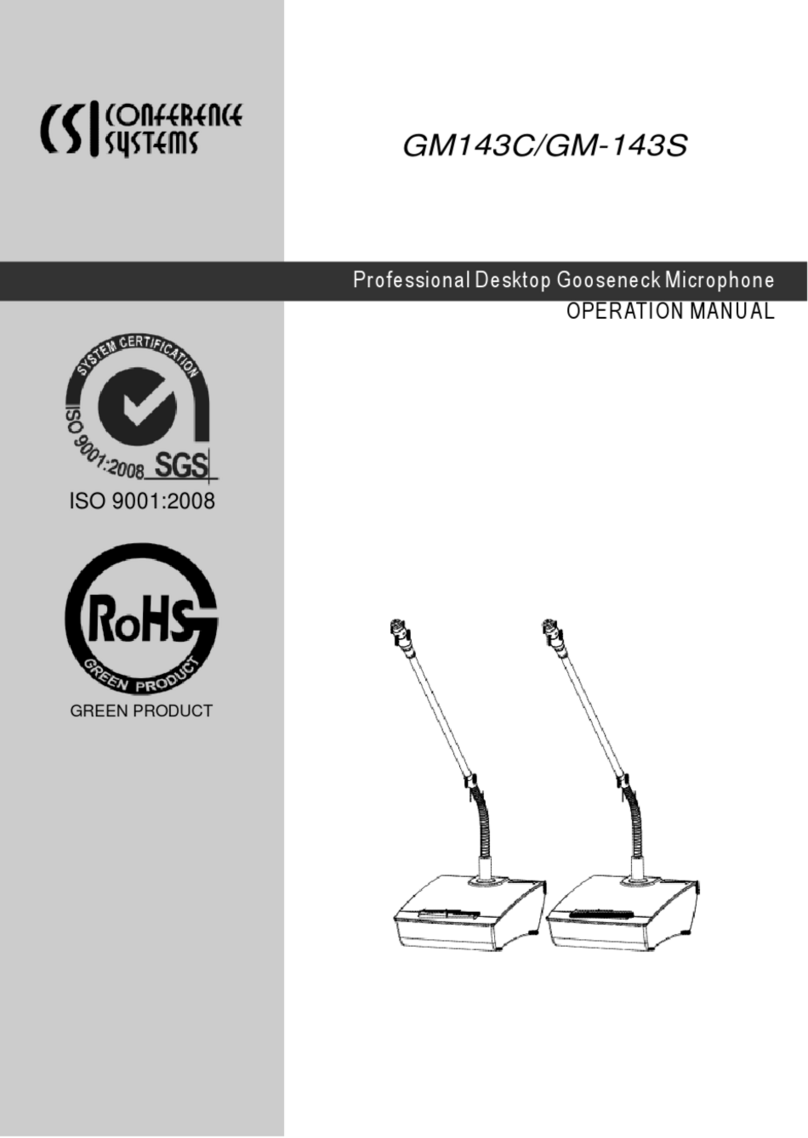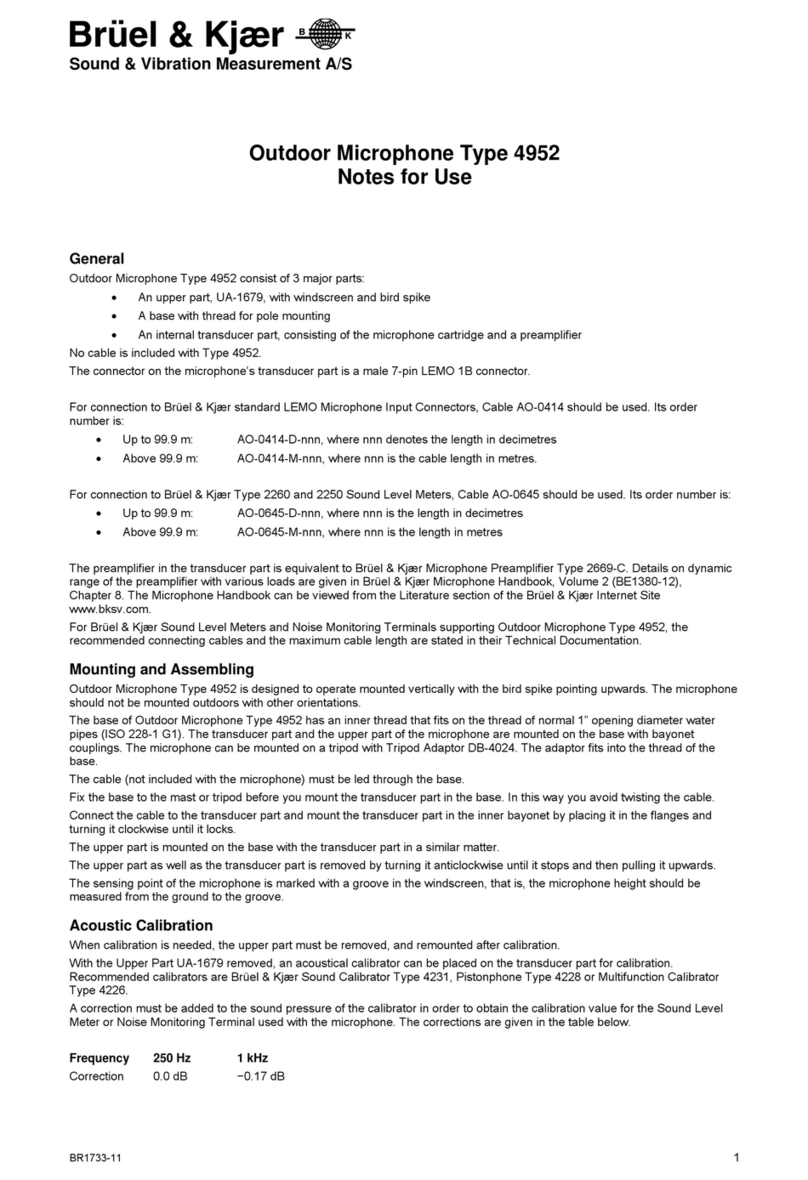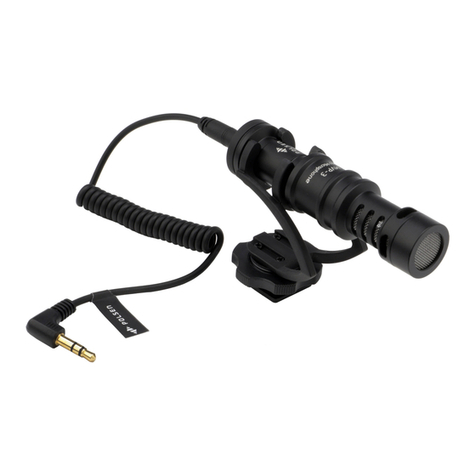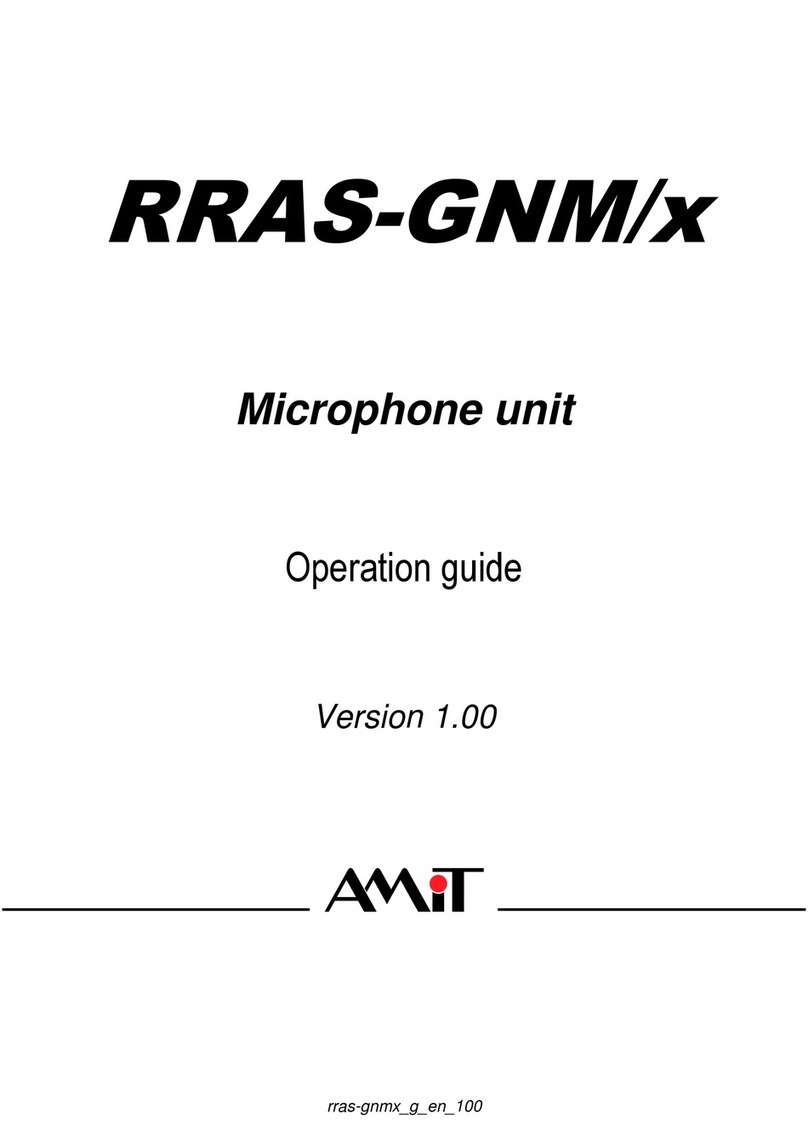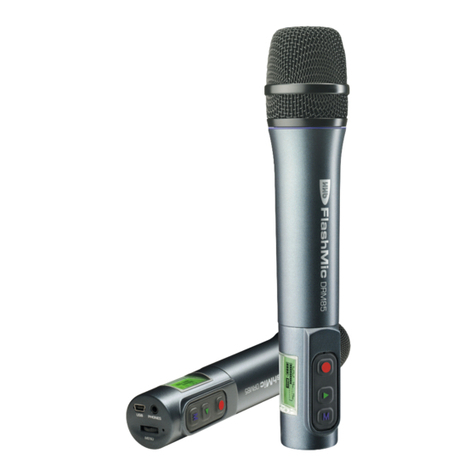ECM-140
Best.-Nr. 23.4350
www.imgstageline.com
Microphone électret
à grande membrane
Veuillez lire la présente notice avec attention avant
le fonctionnement et conservez-la pour pouvoir
vous y reporter ultérieurement.
1 Possibilités dʼutilisation
Le microphone ECM-140 avec une membrane
25,4 mm (1″) extrêmement fine, avec revêtement
or, est conçue pour des utilisations professionnelles
en studio et en direct. Il est tout aussi bien adapté
pour des prises de son dʼinstruments que pour des
applications de chant et discours. Pour le fonction-
nement, le microphone requiert une alimentation
fantôme de 48 V .
Sont livrés un coffret, une bonnette de protection
et un support atténuateur de vibrations (araignée).
2 Conseils dʼutilisation importants
Le microphone répond à toutes les directives
nécessaires de lʼUnion Européenne et porte donc le
symbole .
GLe microphone nʼest conçu que pour une utilisa-
tion en intérieur. Protégez-le dʼune humidité éle-
vée et de la chaleur (plage de température de
fonctionnement autorisée : 0 – 40 °C).
GPour le nettoyer, utilisez uniquement un chiffon
sec et doux, en aucun cas de produits chimiques
ou dʼeau.
GNous déclinons toute responsabilité en cas de dom-
mages matériels ou corporels résultants si le micro-
phone est utilisé dans un but autre que celui pour
lequel il a été conçu, sʼil nʼest pas correctement
branché ou sʼil nʼest pas réparé par une personne
habilitée ; en outre, la garantie deviendrait caduque.
3 Fonctionnement
1) Vissez lʼaraignée sur un pied doté dʼun filetage
15,9 mm (5/8″) ou, avec un adaptateur fileté, sur
un pied avec un filetage 9,5 mm (3/8″). Appuyez
sur les deux étriers métalliques ensemble dans le
support et insérez le microphone.
2) Pour diriger le microphone, desserrez la vis de
réglage sur le support, positionnez le micro-
phone de telle sorte que le côté avec le symbole
soit en direction de la source audio (lʼaxe du
microphone est vertical par rapport à la direction
principale du son) puis revissez la vis.
3) Reliez le microphone via un cordon avec fiche
XLR mâle (p. ex. un cordon de la série MEC- de
“img Stage Line”) à une entrée micro de lʼappa-
reil audio utilisé (p. ex. table de mixage). Lʼentrée
micro doit avoir une alimentation fantôme 48 V. Si
lʼappareil audio ne délivre pas dʼalimentation fan-
tôme, reliez le microphone via un appareil à ali-
mentation fantôme (p. ex. EMA-3 de “img Stage
Line”) à lʼappareil audio.
4) Si besoin, placez la bonnette. La bonnette ou une
protection anti-pop disponible en option (p. ex.
WS-100 de “img Stage Line”) empêche lors dʼap-
Lorsque le microphone est définitivement
retiré du service, vous devez le déposer
dans une usine de recyclage adaptée pour
contribuer à son élimination non polluante.
plications de chant ou de discours, non seule-
ment une accentuation excessive de sons explo-
sifs mais protège aussi le microphone de lʼhumi-
dité de la respiration.
5) Pour éliminer les fréquences basses (p. ex. bruits
de pas), allumez le filtre passe-haut : mettez lʼin-
terrupteur du filtre sur la position .
6) Pour des pressions sonores très élevées (par
exemple dans le cas dʼune prise de son proche
de batterie ou de cuivres), une atténuation de
10 dB peut être allumée pour protéger les appa-
reils suivants dʼune surcharge. Mettez lʼinterrup-
teur dʼatténuation sur la position “
-
10 dB”.
4 Caractéristiques techniques
Système : . . . . . . . . . . . . récepteur à gradient de pression/
cardioïde
Filtre passe-haut : . . . . . 150 Hz, 6 dB/octave
Interrupteur atténuation :
-
10 dB
Sensibilité : . . . . . . . . . . . 15 mV/Pa à 1 kHz
Impédance : . . . . . . . . . . 200 Ω
Pression sonore max : . .
130 dB pour taux de distorsion 0,5 %
Rapport signal/bruit : . . . 80 dB (filtre A)
Alimentation : . . . . . . . . . alimentation fantôme 48 ±4 V
Branchement : . . . . . . . . XLR, symétrique
Configuration contacts : 1 = blindage/alim. fantôme
-
2 = signal +/alim. fantôme +
3 = signal
-
/alim. fantôme +
Dimensions, poids : . . . .
∅
50 mm × 195 mm, 470 g
Tout droit de modification réservé.
Microfono a elettrete
a grande membrana
Vi preghiamo di leggere attentamente le presenti
istruzioni prima della messa in funzione e di con-
servarle per un uso futuro.
1 Possibilità dʼimpiego
Il microfono ECM-140 con la sua membrana di
25,4 mm (1″), estremamente sottile, placata dʼoro,
è stato realizzato per impieghi professionali negli
studi di registrazione e dal vivo; è adatto sia per pre-
levare il suono da strumenti musicali che per appli-
cazioni di canto e di lingua parlata. Il microfono fun-
ziona con unʼalimentazione phantom di 48 V .
Il kit comprende una valigetta, un supporto del
microfono che riduce le vibrazioni (spider) e una
spugna antivento.
2 Avvertenze di sicurezza
Il microfono è conforme a tutte le direttive rilevanti
dellʼUE e pertanto porta la sigla .
GUsare il microfono solo allʼinterno di locali. Pro-
teggerlo dallʼ umidità e dal calore (temperatura
dʼimpiego ammessa fra 0 e 40 °C).
GPer la pulizia usare solo un panno morbido,
asciutto; non impiegare in nessun caso prodotti
chimici o acqua.
GNel caso dʼuso improprio, di collegamenti sba-
gliati o di riparazione scorretta del microfono, non
si assume nessuna responsabilità per eventuali
danni consequenziali a persone o a cose e non si
assume nessuna garanzia per il microfono.
3 Messa in funzione
1) Avvitare lo spider su uno stativo con filettatura di
15,9 mm (5/8″) oppure, tramite un adattatore, su
uno stativo con filettatura di 9,5 mm (3/8″). Eser-
citare una pressione sulle due staffe di filo di ferro
dello spider ed inserire il microfono.
2) Per orientare il microfono, allentare la vite di bloc-
caggio del supporto, posizionare il microfono in
modo che il lato con il simbolo indichi verso la
sorgente sonora (lʼasse del microfono è verticale
rispetto alla direzione principale del suono) e
stringere di nuovo la vite.
3) Collegare il microfono con un ingresso microfono
dellʼapparecchio audio utilizzato (p. es. di un
mixer), servendosi di un cavo con connettori XLR
(p. es. un cavo della serie MEC di “img Stage
Line”). Lʼingresso deve essere equipaggiato con
un alimentazione phantom di 48 V. Se lʼapparec-
chio audio non dispone di alimentazione phan-
tom, occorre collegare il microfono con lʼapparec-
chio audio per mezzo di un alimentatore phantom
esterno (p. es. EMA-3 di “img Stage Line”).
4) Se necessario montare la spugna antivento. Tale
dispositivo antivento, o una protezione corri-
spondente disponibile come accessorio (p. es.
Se si desidera eliminare il microfono defi-
nitivamente, consegnarlo per lo smalti-
mento ad unʼistituzione locale per il rici-
claggio.
WS-100 di “img Stage Line”), esclude nella lin-
gua parlata e nel canto non solo la riproduzione
esagerata delle consonanti occlusive, ma pro-
tegge il microfono anche dallʼumidità del respiro.
5) Per sopprimere le frequenze basse (p. es. da cal-
pestio) attivare il filtro passa-alto, portando lʼin-
terruttore del filtro in posizione .
6) Nelle pressioni sonore molte alte (p. es. in caso
di vicinanza di percussioni o ottoni), per evitare il
sovrapilotaggio degli apparecchi a valle, si può
attivare lʼattenuazione di 10 dB, portando il rela-
tivo interruttore in posizione “
-
10 dB”.
4 Dati tecnici
Sistema: . . . . . . . . . . . . . a gradiente di pressione,
caratteristica a cardioide
Filtro passa-alto: . . . . . . . 150 Hz, 6 dB/ottava
Attenuazione: . . . . . . . . .
-
10 dB
Sensibilità: . . . . . . . . . . . 15 mV/Pa con 1 kHz
Impedenza: . . . . . . . . . . 200 Ω
Pressione sonora max.: . 130 dB
con fattore di distorsione 0,5 %
Rapporto S/R: . . . . . . . . 80 dB (filtro A)
Alimentazione: . . . . . . . . alimentazione phantom 48 ±4 V
Collegamento: . . . . . . . . XLR, simmetrico
Piedinatura: . . . . . . . . . 1 = schermo/alim. phantom
-
2 = segnale +/alim. phantom +
3 = segnale
-
/alim. phantom +
Dimensioni, peso: . . . . . .
∅
50 mm × 195 mm, 470 g
Con riserva di modifiche tecniche.



